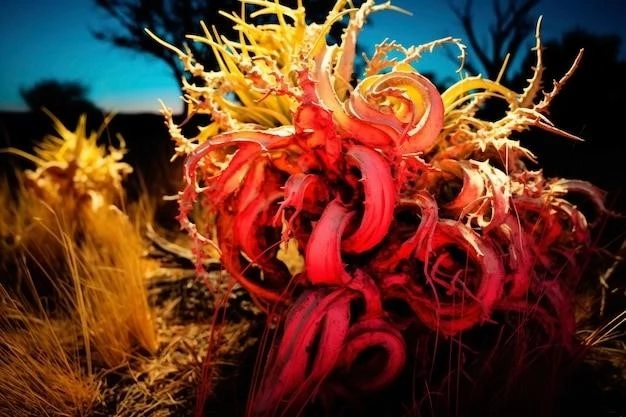Carnivorous plants, also known as insectivorous plants, are a group of fascinating and unique plants that have evolved to supplement their nutrient intake by trapping and digesting insects and other small animals․ These plants thrive in nutrient-poor environments, such as bogs, swamps, and sandy soils, where traditional methods of obtaining nutrients are limited․ Their ability to capture and consume prey has captivated scientists and nature enthusiasts alike, making them a subject of ongoing research and fascination․
Evolution and Adaptation
The evolution of carnivorous plants is a remarkable example of natural selection and adaptation․ Over millions of years, these plants have developed specialized structures and mechanisms to attract, trap, and digest prey․ Their carnivorous nature arose as a response to the scarcity of essential nutrients, particularly nitrogen, in their habitats․ By supplementing their diet with animal matter, carnivorous plants have gained a competitive advantage in these challenging environments․

Types of Carnivorous Plants
Carnivorous plants are classified into several categories based on their trapping mechanisms:
- Pitfall Traps: These plants have evolved pitcher-shaped leaves that act as traps․ Insects are attracted to the pitcher’s rim, often by sweet nectar or colorful markings․ Once inside, they lose their footing on the slippery walls and fall into a pool of digestive fluid at the bottom․
- Snap Traps: The most iconic type of carnivorous plant, snap traps possess highly specialized leaves that can rapidly snap shut, trapping unsuspecting insects․ This rapid movement is powered by turgor pressure and triggered by sensory hairs on the leaf surface․
- Flypaper Traps: These plants have sticky leaves covered in mucilage, a sticky substance that traps insects․ Once an insect lands on the leaf, it becomes entangled and unable to escape, eventually being digested by enzymes secreted by the plant․
- Lobster-Pot Traps: Similar to pitfall traps, lobster-pot traps feature a narrow entrance and a wider chamber․ Insects are lured into the trap by scents or visual cues, but their escape is hindered by inward-pointing hairs that prevent them from backing out․
- Suction Traps: This unique trapping mechanism is found in only one genus of carnivorous plants, Utricularia․ These plants have bladder-like traps that rapidly suck in unsuspecting prey, trapping them within the bladder․
Digestion and Nutrient Absorption
Once prey is trapped, carnivorous plants secrete digestive enzymes that break down the insect’s tissues, releasing nutrients that the plant can absorb․ These enzymes are similar to those found in animal digestive systems, and they efficiently break down proteins, carbohydrates, and fats․ The absorbed nutrients are then used by the plant for growth, reproduction, and other metabolic processes․
Conservation and Importance
Carnivorous plants are fascinating and unique members of the plant kingdom, playing important roles in their ecosystems․ They are often found in specialized habitats that are vulnerable to environmental degradation․ Conservation efforts are crucial to protect these plants and their unique adaptations․ Moreover, carnivorous plants serve as indicators of environmental health, providing valuable insights into the ecological integrity of their habitats․

Conclusion
The world of carnivorous plants is filled with wonder and intrigue․ Their remarkable adaptations for trapping and digesting prey showcase the power of natural selection and the diversity of life on Earth․ By understanding these fascinating plants, we gain a deeper appreciation for the intricate relationships between organisms and their environments․ As we continue to explore the secrets of carnivorous plants, we can learn valuable lessons about evolution, adaptation, and the delicate balance of nature․










